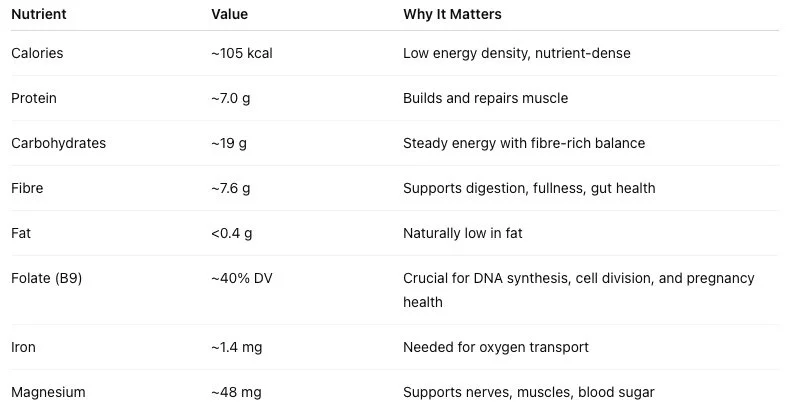Mung Beans: The Ancient Superlegume You Should Be Eating
They’re tiny, humble, and often overlooked—but mung beans have quietly powered some of the world’s most flavourful and nourishing plant-based meals for over 3,500 years.
From steamy Indian dals to fresh Vietnamese sprout salads, mung beans are the unsung heroes of global plant-based cuisine. High in protein, quick to cook, and endlessly adaptable, this small-but-mighty legume might just be the pantry staple you’ve been missing.
Let’s explore how mung beans earned their superlegume status—and how you can unlock their power in your kitchen.
🌍 A Global Staple Rooted in Ancient Wisdom
🇮🇳 India: The Heart of Mung Bean Cooking
In India, mung beans—known as moong dal—are a cornerstone of Ayurvedic tradition. Their cooling, gentle nature makes them ideal for digestion and recovery. Split mung is often simmered with turmeric, cumin, and ginger to make khichdi, a beloved comfort food considered both nourishing and detoxifying.
In South India, whole mung beans are blended with green chilli and ginger to make pesarattu—a crisp, protein-rich dosa that’s hearty, spicy, and naturally gluten-free.
🇨🇳 China: Cooling, Cleansing, and Sweet
In Chinese cuisine, mung beans (绿豆 lǜ dòu) are prized for their cooling (yin) nature. They appear in savoury congee, chilled mung bean soup, and sweet summer drinks that help lower internal heat and prevent dehydration.
Mung bean starch is also transformed into translucent noodles, chewy jellies, and even wrappers for savoury Cantonese rolls.
🇻🇳 Southeast Asia: Sprouted and Versatile
Across Southeast Asia, mung beans appear in every form—sprouted in phở and bún, mashed into Vietnamese rice dumplings (bánh ít trần), or simmered with coconut milk in bubur kacang hijau (Indonesia) and chè đậu xanh (Vietnam).
Their light, adaptable texture makes them equally welcome in soups, desserts, and savoury snacks.
💪 Nutrition Snapshot: What’s Inside 100g of Boiled Mung Beans
Note: Nutritional values may vary slightly depending on variety and preparation method.
🌿 Additional Benefits:
Rich in resistant starch, which supports gut health by feeding friendly bacteria
Tip: If you're new to resistant starches, start with smaller portions to allow your digestive system to adjust.
Sprouting increases vitamin C and antioxidant activity
Pairs easily with grains to form a complete protein
While mung beans contain many essential amino acids, they are relatively low in methionine. Pairing them with grains, nuts, or seeds helps create a complete protein profile.
🥣 How to Cook Mung Beans (Without the Fuss)
Mung beans are some of the most convenient legumes you can keep in your pantry. Here’s how to handle them:
Whole Mung (Green):
Rinse and simmer for 30–40 mins until soft
Optional: Soak for 1–2 hours to reduce cooking time or enhance digestibility
Ideal for soups, stews, curries, or sprouting
Split Mung (Yellow):
Rinse well
Simmer for 15–20 mins
No soaking needed!
Great for dals, khichdi, or mung pancakes
To Sprout:
Soak whole mung overnight.
Drain, rinse, and cover with a breathable lid.
Rinse twice daily until sprouted (2–3 days).
Store in the fridge and eat fresh within 3 days.
🍽 Serving Ideas to Get You Started
🌶️ Tadka Moong Dal – Sauté mustard seeds, garlic, and chilli. Stir into the yellow mung with turmeric and lemon.
🥞 Pesarattu Dosa – Blend soaked whole mung with ginger and green chilli. Cook on a skillet like a pancake.
🥗 Sprouted Mung Salad – Toss fresh sprouts with cucumber, carrot, lime juice, and peanuts.
🍲 Mung Bean Coconut Soup – Simmer whole mung beans with ginger, garlic, and finish with coconut milk and greens.
🍨 Chè Đậu Xanh – Simmer split mung with pandan and sugar. Serve with coconut cream and toasted sesame.
🌏 The Sustainability Edge — With a Note of Nuance
Mung beans are a smart environmental choice. Compared to other major crops, they have:
✅ Lower average water usage
✅ Minimal need for synthetic nitrogen fertiliser
✅ Soil-enriching potential via nitrogen fixation
However, sustainability is never one-size-fits-all. In some regions, mung beans may require irrigation, and nitrogen fixation rates can vary based on soil health and farming practices.
Even so, their low input needs and adaptability make them one of the most planet-friendly legumes—especially when grown in thoughtful systems.
💫 Final Takeaway: A Small Bean with a Big Legacy
Mung beans aren’t just nutritious—they’re ancestral. They’ve travelled across continents, nourished countless traditions, and continue to adapt to modern kitchens.
In a world seeking flavour, nourishment, and sustainability, mung beans offer all three—without demanding hours in the kitchen or dollars from your wallet.
Let this ancient superlegume become a fresh staple in your plant-based journey. Your body, your tastebuds, and the planet will thank you.


